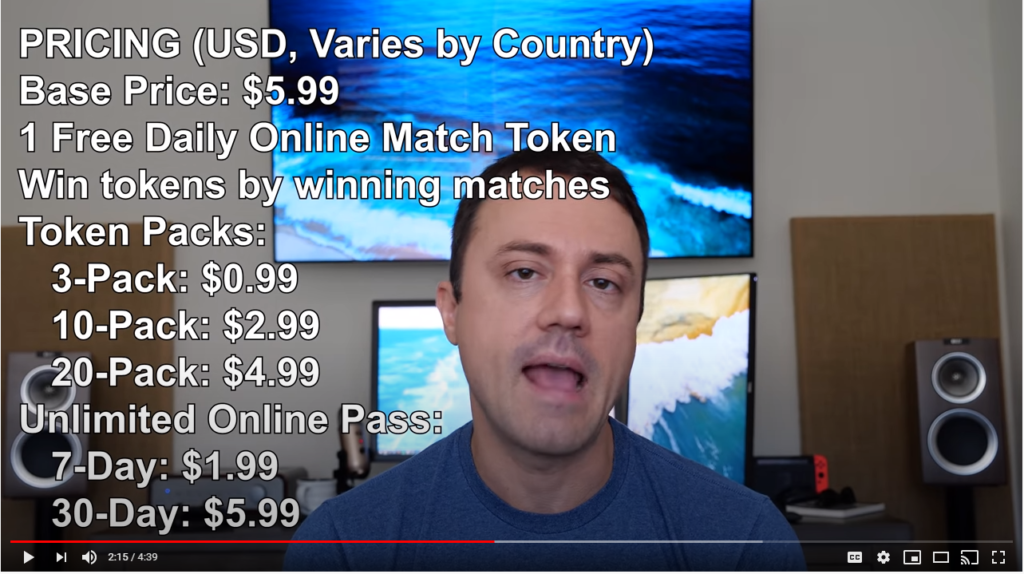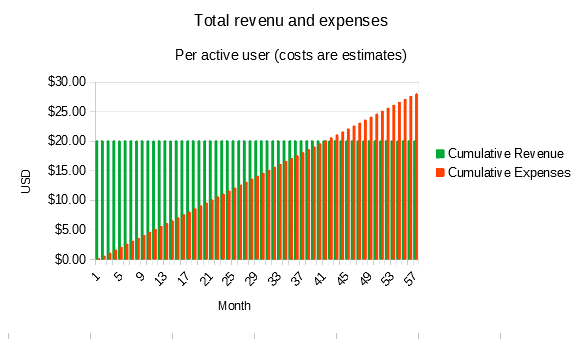In defense of Xaviant and the subscription model
On May 12, 2020, Xaviant (a game development company), released a video announcing that a video game its players loved is coming back. Usually, this kind of video will get lots of love and upvotes on YouTube but instead, it is one of the most downvoted videos on YouTube.
It is very clear why this video got so much hate online: it is all because of this:

What just happened here is the game developer released a game but unlike the previous version of this game (which was pay once and play forever), this game appears to be a flat price plus you must pay a subscription to play online. People are upset and confused about having to pay to play a game they already paid for. I believe the anger is misguided and wrong, however, I also believe the game developer made the situation worse by having a complicated cost structure.
I never played this game, nor am I in the video game industry so I cannot speak from expert experience. However, I am a Software Engineer that can view what’s happening from a software lifecycle point of view. When looking at it from that point of view I can defend Xaviant on some level.
ONE TIME INCOME, LONG TERM EXPENSES
The issue with online multiplayer games is that the company that operates them have regular expenses just to keep the multiplayer functionality running in playable performance. Running servers is NOT cheap, despite some common beliefs to the contrary. The long term financial view of a pay-once-play-forever multiplayer video game looks something like this, per active user. Note, my assumption was an average of $0.50 in expenses per month per active user, the exact figure is irrelevant as eventually, the cumulative revenue becomes less than cumulative expenses.

Revenue stays flat, expenses add up. This is not sustainable.
WHAT ARE THE COSTS OF RUNNING A GAME LIKE THE CULLING?
Getting true expenses is difficult as some variables are fixed and others are dynamic, and others are somewhere in between. Some of the costs I can think of are:
- Lease of office building plus utility costs (mostly a fixed monthly cost)
- Group of developers to maintain the game (mostly a fixed monthly cost)
- Group of non-developers to handle running the company, people like the CEO, HR, CFO, accountants, support representatives, etc. (mostly a fixed monthly cost)
- Servers to keep the game in existence, features like downloads, updates, matchmaking, friend system, online profile, etc. (mostly a fixed monthly cost)
- Servers to run the matches. (dynamic cost)
I did not include taxes because those are included already in every expense listed.
HANDLING THE PROBLEM
Other games generally handled this problem by adding ways to have a constant revenue stream in their games. This could be something direct like a subscription for World Of Warcraft, or something indirect like cosmetic items to purchase with real currency, like in games like Fortnite, Counter-Strike Global Offensive, and Overwatch, this is also given the name of Loot Boxes. Or even it could be by releasing new games in a regular release cycle to generate a stream of revenue, for example, the Battlefield and Call of Duty series (though those two are firmly in the loot boxes space too). The last mechanism is something called Downloadable Content, where the developers add new features to the game but those new features must be bought.
Players don’t like Loot Boxes, nor do players like paying for DLCs. Xaviant wanted to try something new, pay as you play method, and give players all the future content but charge them to play online because that is a running cost. Unfortunately, the system they thought of is the least popular of them all.
PLAYERS’ EXPECTATIONS ARE UNSUSTAINABLE
In an ideal world, players want to get a game for free and play online for free while also getting all the updates and new content all for free. That is completely impossible unless some billionaire does it as a charitable donation to the society. If players cannot get the impossible they demand something unsustainable, pay for the game once (hopefully on sale), and expect the company to keep the servers running indefinitely. When confronted with a game where they pay for it once and continue to pay for it the players revolted. It was an overreaction to a bad launch of a game but its a sign of the future, all video games need a regular stream of income to stay alive. There is no way around it.
A BETTER PRICE STRUCTURE THAT XAVIANT SHOULD HAVE WENT FOR
Instead of a complicated web of prices, it should have been simpler.
$5.00 to buy the game. This will give you unlimited access to the Single Player and one free online match a day (if you quit a match within five minutes of it starting, excluding you being killed, then you can start another match for free the same day).
$5.00/month to get unlimited online matches.
You can play unlimited online matches within a team with your friends if at least one friend has a monthly subscription.
CONCLUSION
Video games are changing. They are becoming harder and more expensive to make and at the same time, they are becoming harder and more expensive to keep running. As players, we must understand the lifecycle of a video game and also understand what a small company like Xaviant is really trying to do when they release an extremely unpopular pricing structure. They want to position the game to stay online for years. Not having money to keep servers running is not good for players.